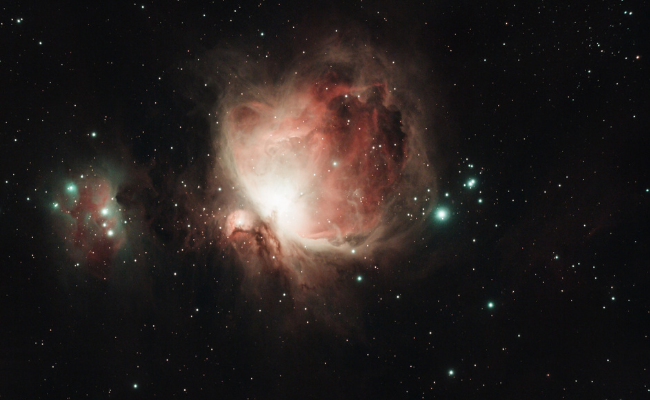Repeating Radio Signal Traced Back to Distant Planet, Scientists Say
A recent study reveals that a nearby star system has emitted a periodic radio signal. It suggests the potential existence of a magnetic field surrounding one of its planets, which is similar in size to Earth.
The repeating radio signal is a fast radio burst (FRB). These bursts are incredibly powerful; until recently, their origins have remained a mystery.
However, using advanced technology and data analysis, scientists have traced one FRB back to a planet roughly 3.6 billion lightyears away.
Confirmation of a magnetic field, a vital element in supporting life on Earth, could enhance the exploration of habitable planets and extraterrestrial life throughout the universe.
However, more extensive research is necessary to establish a conclusive argument that the signals indeed originate from a planet’s magnetic field.
Astronomers have detected a repeating radio signal from an exoplanet and the star that it orbits, both located 12 light-years away from Earth.https://t.co/N1Cyo8AV9L
— CNN International (@cnni) April 4, 2023
Life on Other Planets
The Earth’s magnetic field has played a crucial role in protecting life by shielding the planet from the Sun’s harmful radiation. It also preserves a stable atmosphere for the biosphere.
However, scientists believe that other worlds orbiting distant stars, known as exoplanets, may also require durable magnetic fields to support life.
Previously, scientists have detected magnetic star-planet interactions (SPIs) in giant Jupiter-like exoplanets. However, the weaker magnetic signals emitted by Earth-sized exoplanets have made it challenging to observe these interactions.
You may also like: Study Suggests AI Tools Could Detect Signs of Life on Mars
After years of research, Sebastian Pineda from the University of Colorado and Jacqueline Villadsen from Bucknell University have discovered unprecedented evidence of repeated radio bursts suggesting a magnetic field around YZ Ceti b, an Earth-sized exoplanet located just 12 light years away.
YZ Ceti b has a very short orbit of just two days, which makes it unsuitable for hosting life but ideal for studying magnetic SPIs, according to a study published in Nature Astronomy on Monday.
The data results
Pineda expressed his excitement upon seeing the radio data sets. The data show the signature of repeated radio bursts they were searching for. They coordinated additional observations based on the planet’s orbit, hoping to confirm their findings.
After analyzing the additional data, Villadsen noticed similar radio signals. This led to much excitement for the researchers. They realized they might have found what they were looking for. Despite their excitement, the researchers were cautious.
The signals could also be a standard part of the radioactivity of stars like YZ Ceti. It is a slowly rotating red dwarf. It means the emission may not necessarily come from any planet in the system.
In their search for these signals, the researchers focused on small short-period planets. These could have a visible magnetic signature due to their proximity to their stars.
As these planets move through their orbits, their magnetic field could interact with the star’s magnetic field. Thus, creating an observable pattern of radio bursts from Earth.
BREAKING🚨: A Repeating Alien Radio Signal Has Been Traced Back To A Potentially Habitable Rocky, Earth-Like Exoplanet https://t.co/qb2ibvaspH
— Curiosity (@MAstronomers) April 5, 2023
About the Distant Planet
According to Pineda, there are still many unknown factors about the system. Still, they show the potential of radio data and magnetic star-planet interactions to measure the magnetic field strengths of Earth-sized exoplanets.
However, he does not believe they have achieved this yet. They plan to monitor the star. This is so they can confirm that the radio detections are related to the planet, not the star itself.
His team will use radio observatories and search for periodic radio signals that coincide with the planet’s position in its orbit.
This process may be challenging and time-consuming. But it is necessary for confirmation. If this discovery does confirm the existence of magnetic star-planet interactions around Earth-sized exoplanets, it could assist researchers in their search for habitable planets around other stars.
You may also like: NASA’s Innovative Space Cup Can Hold a Drink in Zero Gravity
Even so, it may be challenging to look for magnetic signatures around rocky planets in the habitable zones of their stars, where the likelihood of liquid water and life is higher.
This is because these planets have larger orbits. It weakens the magnetic interactions between the stars and planets to the point where some may not be detectable.
While this could be advantageous for any secret alien life, it also makes detecting magnetic interactions between stars and planets more difficult.


